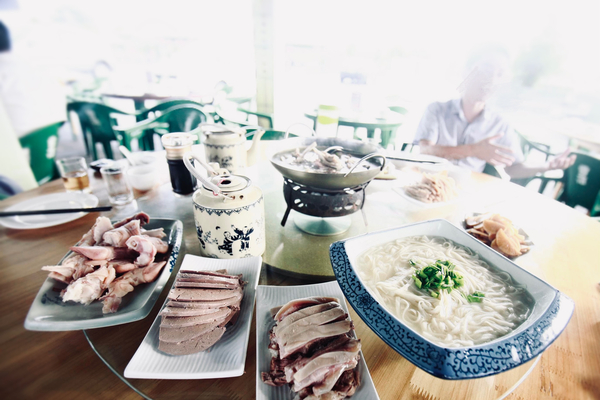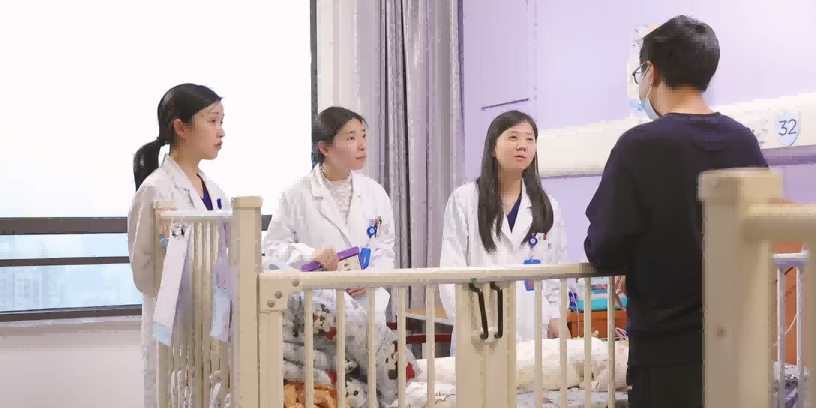Shanghai explores a new model for youth myopia prevention and control: three parties jointly build a "Pilot School for Comprehensive Myopia Prevention and Control with Traditional Chinese and Western Medicine"
September this year is the seventh National Myopia Prevention and Control Publicity and Education Month. In order to promote the implementation of the "Bright Action Work Plan for Myopia Prevention and Control in Children and Adolescents", on the 25th, the Eye, Ear, Nose and Throat Hospital of Fudan University teamed up with the Shanghai Acupuncture and Meridian Research Institute to launch the first pilot school in the No. 1 Central Primary School in Xuhui District. The three parties jointly built Explore the synergy of traditional Chinese and Western medicine to continue to promote the prevention and control of myopia in children and adolescents.
Eyes are one of the most important organs for perceiving the world. As the incidence of myopia increases, visual health is gradually threatened. Medical experts say that once myopia occurs, it is irreversible. If it develops into high myopia, it will increase the risk of a series of blinding eye diseases such as retinal detachment, macular degeneration, and scleral staphyloma.
This "three-party joint construction" integrates resources to work together for prevention and control. Zhou Xingtao, director of the Eye, Ear, Nose and Throat Hospital, said that the hospital will give full play to its professional advantages and strength, and cooperate with the Acupuncture and Meridian Research Institute to carry out health science lectures on myopia prevention and treatment to assist schools in improving students' eye care. Health screening and myopia prevention and control work to protect the visual health of primary school students.
Liu Huirong, deputy director of the Acupuncture and Meridian Research Institute, said that combined with the construction of pilot schools, the use of appropriate traditional Chinese medicine techniques such as auricular pressure pills will be vigorously promoted, and various methods such as traditional Chinese medicine intervention and health education will be used to prevent and control juvenile myopia early and reduce myopia. The onset of fatigue and accommodation disorders and promoting vision health in adolescents.
Lu Peixian, principal of Xuhui District No. 1 Central Primary School, said that the school will give full play to its resource advantages, promote "medicine and education complement each other", actively carry out health education publicity actions, and guide students to consciously develop good eye-use habits.
How can appropriate TCM techniques prevent and control myopia? Cao Yao Jiani and Mou Lin, ophthalmologists at the Eye, Ear, Nose and Throat Hospital, said: Traditional Chinese medicine emphasizes prevention before the disease starts and prevents the disease from getting worse. The main myopia prevention and control methods include acupuncture, auricular acupuncture, massage, eye exercises, etc. Based on the meridian and acupoint theory of traditional Chinese medicine, stimulation of acupoints through massage, acupuncture, etc. can stimulate the body's self-regulation and repair, improve eye blood circulation, relieve tense and spasmodic muscles, improve visual function, and improve naked-eye vision.
Citizens can also perform acupoint massage on their own to relieve eye fatigue and prevent and control myopia.
Acupoint massage points: Jingming, Cuanzhu, Sizhukong, Tongziliao, Yangbai, Sibai, Chengqi, Taiyang, Fengchi, Hegu, Guangming, etc. The specific points are as follows:
Jingming: The depression slightly above the medial canthus of the eye
Tongziliao: outside the outer canthus of the eye, in the depression on the outer edge of the orbital bone
Yang Bai: Eyes looking straight ahead, pupils straight upward, 1 inch above the eyebrows
Sibai: eyes looking straight ahead, pupils straight downward, in the depression of the infraorbital foramen
Chengqi: eyes facing forward, pupils straight down, between the eyeballs and the lower edge of the orbits
Sun: On both sides of the forehead, above the extended line of the outer canthus of the eye, in the depression behind the eyebrow tips
Fengchi: In the back of the neck, under the occipital bone, in the depression between the sternocleidomastoid muscle and the upper end of the trapezius muscle
Hegu: On the back of the hand, at the middle point of the second metacarpal bone where the muscles are thick
Bright spot: On the outside of the calf, 5 inches above the tip of the lateral malleolus, at the front edge of the fibula
Acupoint massage method: Use fingertips or an acupoint massage stick to massage each acupoint for 1-2 minutes. The massage intensity should be comfortable for soreness and swelling. It can be repeated several times a day. You can also close your eyes during massage to fully feel the feeling of body relaxation. It is necessary to wash your hands before massaging, perform hand hygiene, and pay attention during massage to avoid injury.
As for auricular acupressure, experts explain: There is a close connection between the ears and various parts of the body. The ears are distributed with many auricular points that communicate with the internal organs, meridians, tissues and organs of the human body. They can not only reflect diseases, but also prevent and treat diseases by regulating the functions of the corresponding internal organs and organs.
Ear acupoint massage method: Before applying pressure on the ear acupoints, use an ear acupoint probe pen to explore sensitive points in the acupoint area. After disinfecting with alcohol cotton balls, use magnetic bead auricular acupoint stickers to apply and press firmly on the explored ear acupoints. Take the eyes, the front of the screen, the back of the screen, liver, kidney, heart, and Shenmen, and press each acupoint vertically with your fingers 20-30 times, at least 3 times a day. The pressure should be as high as possible if the ear point is sore and painful and can be tolerated. For degrees. Be careful not to rub back and forth when pressing to avoid damaging the local skin of the ear points. At the end of each compression, if the entire ear is red and warm, the compression is in place.





